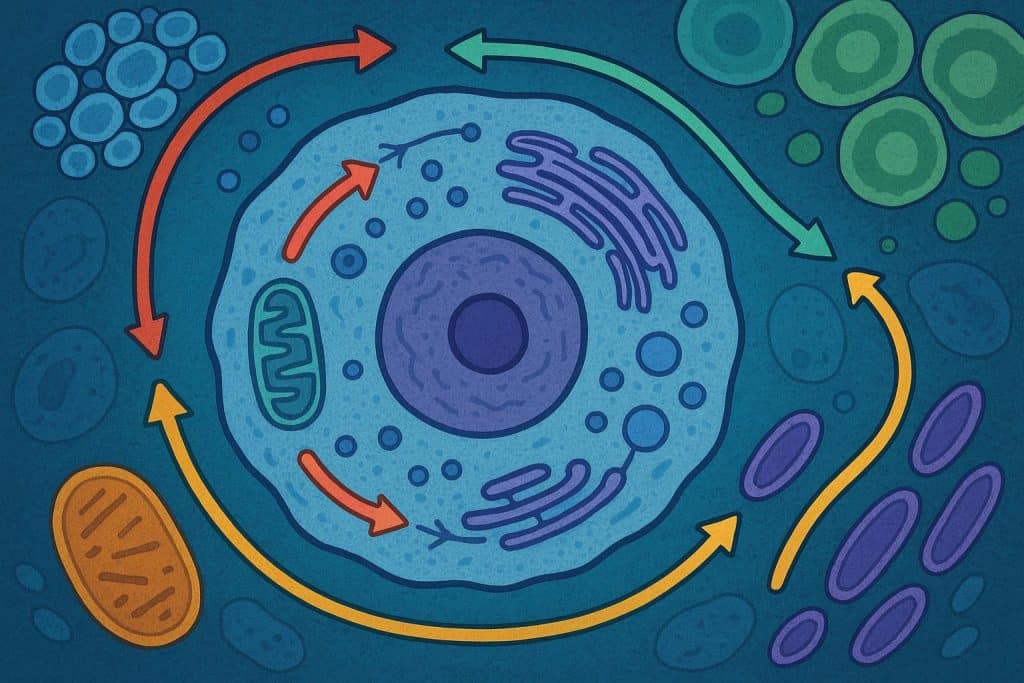For decades, the spotlight in biology has shone brightly on genes. The genome was hailed as the master script of life, the complete instruction manual for every human cell. But now, researchers are looking past that static code and into something far more dynamic: the living web of proteins and signals that turn those genetic blueprints into action. It’s a shift from reading the plan to watching the machinery run in real time, and it’s revealing a more complex, interactive picture of how health and disease truly unfold.
The Shift From Blueprint To Motion
When the Human Genome Project wrapped up in 2003, the scientific community expected it would answer nearly everything about the body’s workings. Instead, it raised more questions. If genes are the recipe, what’s happening in the kitchen? Enter proteomics, a field that examines how proteins interact, change shape, and influence one another within cells. By tracking these constantly shifting molecular players, scientists can start to understand not just what’s possible in a cell, but what’s actually happening minute by minute.
Researchers studying proteomics in cell biology uncover molecular insights into dynamic cellular processes, development, signaling, and disease that were previously invisible to traditional genetic studies. These insights are helping redefine conditions like Alzheimer’s, autoimmune disorders, and cancers not as single-gene failures but as network breakdowns—failures in communication between hundreds or even thousands of molecular participants.
The Rise Of Real-Time Biology
Modern tools like mass spectrometry, cryo-electron microscopy, and high-resolution imaging have brought the invisible to life. Scientists can now observe proteins folding, interacting, and degrading in real time, almost like watching a movie instead of scanning a script. This real-time view shows that even tiny disruptions can set off chain reactions throughout the body’s systems, hinting at why diseases often resist one-size-fits-all treatments. The body isn’t a static diagram; it’s a living, constantly adjusting machine.
That understanding is driving new kinds of therapies that aim to restore harmony in those molecular networks instead of just silencing individual genes or symptoms. It’s also reframing how we think about side effects and resilience, since those networks often compensate or rewire themselves when one pathway is blocked.
From Data To Discovery
Every new molecule mapped adds another node to an already staggering web of information. With advanced computational modeling and artificial intelligence, researchers can simulate entire cellular environments, predicting how proteins might respond to changes in temperature, stress, or exposure to new drugs. That allows scientists to test possibilities virtually before they ever reach a lab bench. The result is a kind of molecular forecasting that’s speeding up drug discovery while cutting down on trial-and-error experimentation.
These AI-driven models are beginning to suggest treatments that restore balance instead of forcing control, gentler interventions that coax the body’s natural systems to heal rather than override them. The idea of medicine as a conversation, not a command, is taking hold.
Bridging Light And Life
Parallel to this computational revolution is a growing interest in the body’s interaction with light. Cellular signaling isn’t just chemical; it can also be electromagnetic. That’s where technologies like red and near-infrared light exposure come into play. Scientists exploring the benefits of red light therapy are discovering that certain wavelengths can influence mitochondrial activity, prompting cells to produce more energy, reduce oxidative stress, and activate repair pathways. This connection between light and cellular function is linking physics with biology in ways that were once considered fringe.
While photobiomodulation still has its skeptics, it’s gaining traction in laboratory research for its measurable impact on energy metabolism and inflammation. The merging of photonics with molecular biology represents a fresh interdisciplinary direction, one that might yield both practical therapies and deeper insight into how the human body communicates with itself.
Collaboration Across Disciplines
The future of cellular research is increasingly collective. Biologists, physicists, chemists, and computer scientists are now sharing not just data but conceptual frameworks. Systems biology, once a niche, has become a rallying point for cross-disciplinary collaboration. The old borders between lab types are dissolving, replaced by a shared mission to map and interpret the constantly changing landscape of cellular life.
This collaboration is also reshaping how universities and biotech companies operate, with open-source data projects replacing siloed secrecy. The more global and cooperative this effort becomes, the faster we can decode the cellular systems that underpin everything from aging to mental health.
Looking Ahead
As the conversation shifts from the genome to the proteome, from code to choreography, the tone of biomedical science feels refreshingly alive again. The next revolution won’t be about finding one master molecule or miracle gene, but about understanding the constant, creative motion that defines living systems. The ability to track, visualize, and influence those interactions in real time could lead to treatments that are more personalized, responsive, and humane.
